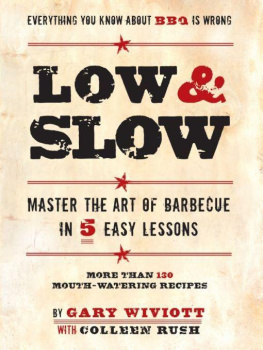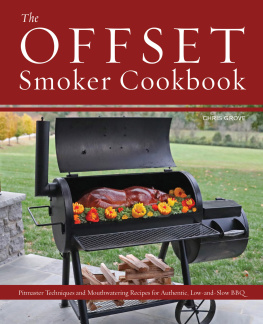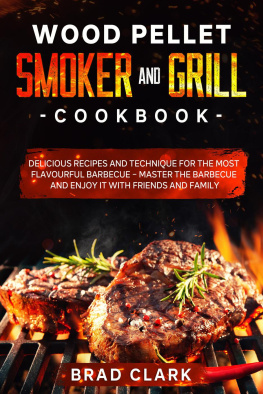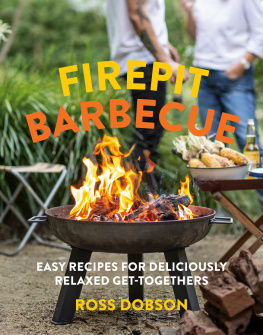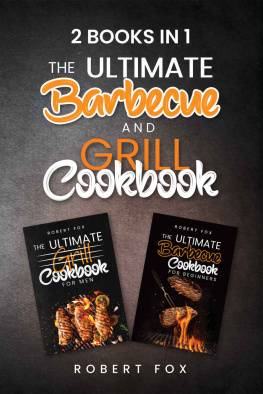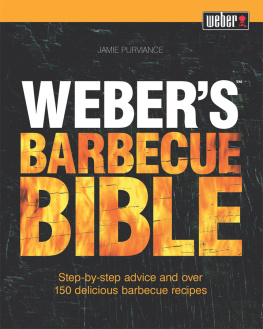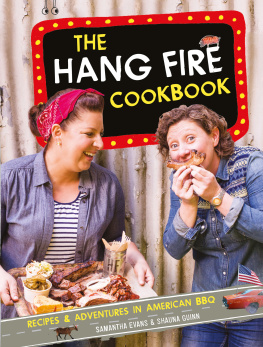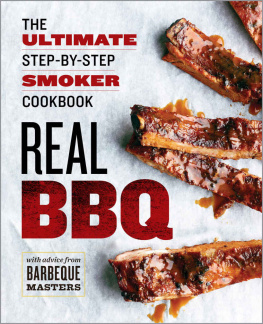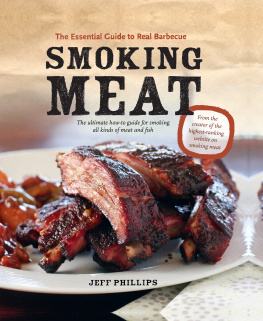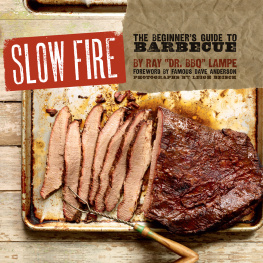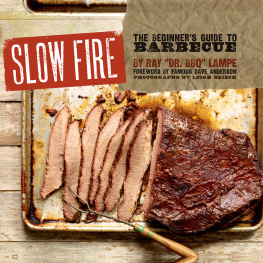Table of Contents
ACKNOWLEDGMENTS
FROM GARY WIVIOTT
TO MY SWEET, PATIENT AND BEAUTIFUL BRIDE ELLEN, you make my heart grow a little each day.
Longtime friend Andy Bloom gets credit as idea man behind gifting me my first smoker.
Thanks to Colleen Rushwriter, friend, drinking buddy, and GPS to my low and slow wandering.
Because one must learn before he can teach, a tip of my hat is in order to Bob in Georgia, Big Jim in Central Florida, Kit Anderson, Bill Ackerman, Dan Gill, Danny Gaulden, Garry Howard, Dave Linebeck, and the participants on the BBQ Porch.
To the many friends, LTHForum members, and Wiviott.com users who completed the original 5-Step program, your willingness to follow, learn and question was critical in helping me refine the program.
Thanks to Scott B. Orr, nephew and friend, whose simple statement thanks for the gift, now what do I do with it signaled the start of this journey.
To friend and 5-Step program graduate Subha Das, your brilliant input on chapter 8 demonstrates a clear commitment to barbecue.
To Coopers in Llano Texas, where god goes when she is in the mood for Texas-style brisket. One small taste nudged me down the true path of BBQ enlightenment.
Finally, a thank-you to my parents, Howard and Joannealways encouraging and supportive even when they are not quite sure what theyre encouraging and supporting.
FROM COLLEEN RUSH
FOR MY MAMA you may have been Miss Mansura High, but youll always be the Pig Queen to me. Vive le cochon!
To Gary, my barbecue senseiyou have an uncanny ability to incite aggro-ness, but also to ease it. I cant imagine working on a project like this with anyone else. This book was meant to be.
INTRODUCTION
DEAR STUDENT,
MORE THAN TEN YEARS AGO, MY WIFE, ELLEN, GAVE ME A WEBER SMOKEY Mountain (WSM) cooker for my birthday, thinking Id make smoked salmon or maybe the occasional rack of ribs. She never anticipated that it would inspire a complete obsession with low and slow barbecue.
How did it happen? I went through many phases while learning this form of cookery. It started out innocentlyI made some chicken or ribs for dinner, and they were just fine. Then I did a little research and learned a few more things. So I bought some new tools and experimented with wood flavoring and vent closures. Next, I started making different types of sauces and rubs. Finally, looking for a magic bullet to make my barbecue better, I bought another cooker. And another one. Pretty soon, I was parking on the street. My garage was stuffed with barbecue equipment and bags of charcoal. I was also reading and participating in a few of the major barbecue Web sites and newsgroups, swapping ideas with and learning from the other barbecue-obsessed out there.
My point? Ive gone overboard in every possible directionlearned everything I never needed to know about barbecue, made every mistake (at least twice), and got suckered into buying all the bells and whistlesso you dont have to. Im not the guy who learned how to barbecue and decided to join the competition circuit to win a few trophies or bragging rights for an award-winning sauce. Nothing gives me greater pride or pleasure than teaching someone the simple art of low and slow.
This program started out as an e-mail to a nephew who wanted to learn how to use a WSM, and it is still guided by the same K.I.S.S. (Keep It Simple, Stupid) philosophy I preached to him. Do exactly as I say, and you will be able to make better barbecue than 95 percent of the so-called barbecue restaurants out there. More than anything, this program is about gaining confidence in your instinctslearning to trust the senses you were born with to create tasty barbecue.
The techniques and instructions for the five dinners are designed to gradually build your understanding of low and slow. Youll learn how to set up and use three different types of charcoal cookers for low and slow barbecue. Youll learn the single most important element of barbecue: how to build and maintain a clean-burning fire. As you make the five dinners, youll build faith in your cookers ability to burn for hours without you constantly fiddling with vents and thermometers. And lets not forget about the food. Youll learn how to impart pure, clean smoke flavor and make tender, delicious barbecue. Youll also learn valuable kitchen skills along the way, from the basics of making your own marinade to how to toast and grind spices for signature rubs.
Now, for a stern lecture. It is strictly an issue of publishing limitations that there isnt a system of locks attached to this book. If I had it my way, you would have to sign a legal document swearing you had successfully completed each dinner before moving on to the next. Then Id give you a key to access the next lesson, and another, and another, until you had followed my instructions to the letter through the last dinner. I cant stress enough how essential it is for you to turn off your brain and simply follow the instructions exactly as I outline them. And they are simian-simple instructionsthe product of years of my own trial and error with backyard low and slow barbecue. You will take no shortcuts. You will not borrow tips from some Hawaiian shirtwearing fool on the Food Network or your half-wit uncle, Pete. You will not invite all of your friends over the first time you attempt a dinner (because there will be failures along the way). Rest assured, the path to great barbecue is yours in just five dinners. But until you successfully complete the Five Easy Lessons Program, you are mine. Do you swear to do as I say, no questions asked? Good. Pupil, prepare to begin your journey.
Gary Wiviott
GEARING UP FOR LOW & SLOW
WHAT IS BARBECUE?
THE WORD BARBECUE MOST LIKELY evolved from one of three origins: the Caribbean word barabicu , the Spanish barbacoa , or the French de barbe et queue (beard to tail), all methods of drying or roasting meat and whole animals on a platform over a wood-burning fire. Today barbecue has become a catchall word covering everything from grilling hot dogs or drowning chicken in a slow-cooker full of sauce to any gathering where outdoor cookery takes place. But for the purpose of this program, and if you want to sound like you know what youre talking about, barbecue is a method. Its a noun. Barbecue is not a verb or a sauce. Its a cooking technique that requires the interaction of wood, charcoal, fire, and meat. If theres no smoke and fire involved, its not barbecue. (Some hardcore barbecue traditionalists would even argue that point and insist that you have to burn down your own wood to make charcoal. Im not going that far.)
Youll probably notice how strongly I feel about this issue throughout the book, but its important to make the distinction because too many people have the wrong idea about what constitutes barbecue. Ribs, chicken, and pulled pork cooked on gas or electric grills or smokers or steamed or baked in ovens is not barbecue. Just because its covered in a sticky, sweet sauce or has grill marks on it doesnt make it barbecue. Dont even get me started on liquid smoke. Generically calling this style of cooking barbecue ignores (and, in my opinion, is an insult to) the rich tradition of real barbecue. At its best, meat cooked by gas or electric heat is only evocative of real barbecueit simply hints at the possibilities. It tastes grilled, roasted, or baked, which is fine. Just dont call it barbecue.

